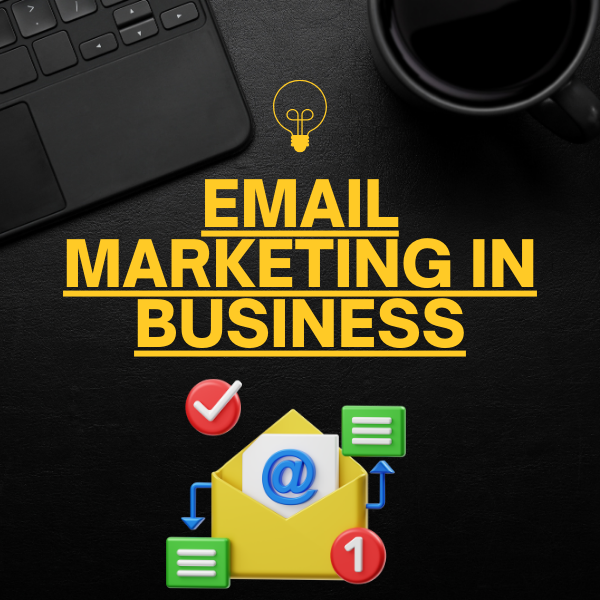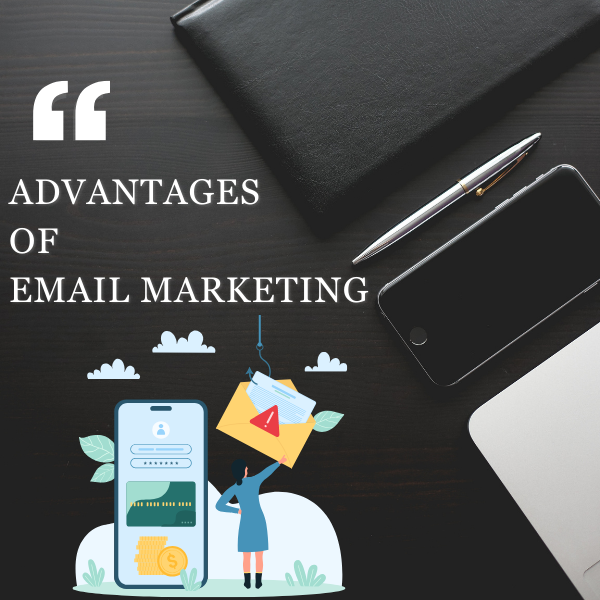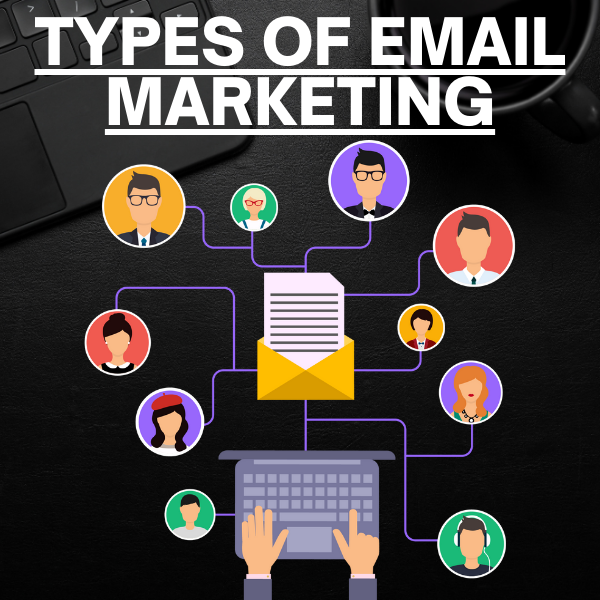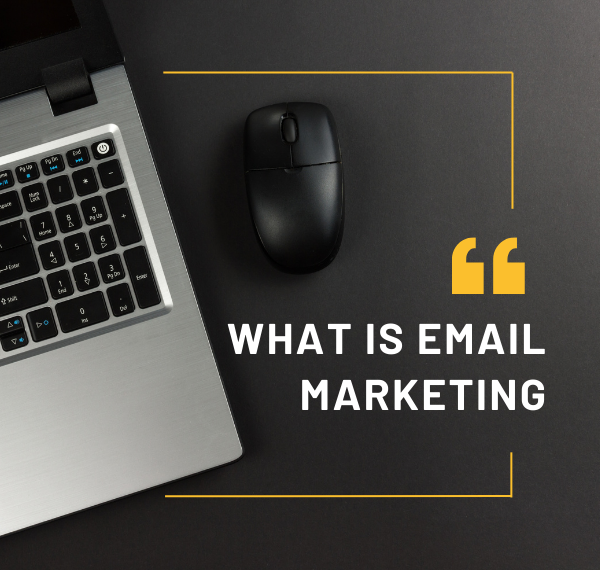Email Marketing
Last updated on March 14th, 2024 at 10:04 am

Email marketing is a vital tool for businesses to engage customers, foster relationships, and drive sales. Craft compelling subject lines and personalized content to capture attention and provide value. Segment your audience for targeted messaging and utilize automation for efficiency. Monitor metrics like open rates and conversions to optimize campaigns. Always prioritize delivering valuable content and respecting subscriber preferences. With strategic execution, email marketing can effectively enhance customer engagement and boost business growth.
What is email marketing?
Email marketing is a digital marketing strategy that involves sending commercial messages to a group of people via email. It’s used by businesses to promote their products or services, communicate with customers, and build brand awareness. Effective email marketing campaigns typically include personalized content, such as special offers, product updates, newsletters, or event invitations, tailored to the recipient’s interests or previous interactions with the brand.
Key components of successful email marketing include crafting attention-grabbing subject lines, designing visually appealing layouts, and ensuring messages are mobile-friendly. Segmentation allows marketers to target specific audience segments with relevant content, maximizing engagement and conversions. Additionally, automation tools streamline the process, enabling scheduled sending and personalized follow-up emails based on user actions. Regularly analyzing metrics like open rates, click-through rates, and conversion rates helps marketers refine their strategies and optimize campaign performance for better results. Overall, email marketing is a powerful tool for driving customer engagement, loyalty, and revenue growth.
Email Marketing In Business

- Audience Engagement: Email marketing allows businesses to engage with their audience directly through personalized messages.
- Promotional Campaigns: It serves as a platform to promote products, services, or special offers to potential and existing customers.
- Customer Relationship Building: Regular communication via email helps in building and nurturing relationships with customers, fostering brand loyalty.
- Lead Generation: Businesses can use email marketing to capture leads by offering valuable content or incentives in exchange for contact information.
- Segmentation: Segmenting email lists based on demographics, behavior, or preferences enables targeted messaging, increasing relevance and engagement.
- Automation: Automation tools streamline the process by scheduling emails, triggering messages based on user actions, and sending personalized follow-ups.
- Data Analytics: Tracking metrics such as open rates, click-through rates, and conversions provides insights into campaign performance and helps refine strategies for better results.
- Cost-Effective: Compared to traditional marketing channels, email marketing is relatively low-cost, offering high ROI when executed effectively.
- Brand Awareness: Consistent email communication keeps the brand top-of-mind for customers, reinforcing brand awareness and recognition.
- Feedback Collection: Businesses can gather valuable feedback from customers through surveys or direct responses, aiding in product/service improvement.
Advantages of email marketing

- Cost-Effective: Compared to traditional marketing channels, email marketing is significantly more cost-effective, requiring minimal investment for potentially high returns.
- Wide Reach: Email allows businesses to reach a large audience instantly, regardless of geographical location, enabling global outreach.
- Targeted Messaging: Email marketing platforms offer segmentation capabilities, allowing businesses to send tailored messages to specific segments of their audience based on demographics, behavior, or preferences.
- Personalization: Personalized emails based on recipient data foster stronger connections with customers, increasing engagement and conversion rates.
- Measurable Results: Email marketing provides detailed analytics, allowing businesses to track metrics such as open rates, click-through rates, and conversions, providing insights for optimization.
- Automation: Automation tools streamline the process, enabling scheduled sending, triggered messages, and personalized follow-ups, saving time and resources.
- Enhanced Brand Awareness: Regular email communication keeps the brand top-of-mind for customers, reinforcing brand awareness and recognition.
- Direct Communication: Email provides a direct line of communication with customers, allowing businesses to deliver timely updates, promotions, and valuable content.
- Increased Sales: Well-crafted email campaigns can drive sales by promoting products/services, offering discounts, or showcasing new offerings to interested customers.
- Feedback Collection: Email marketing can be used to gather valuable feedback from customers through surveys or direct responses, aiding in product/service improvement and customer satisfaction.
Disadvantages of email marketing
- Risk of Spam Filtering: Email marketing messages can be flagged as spam by email service providers, leading to lower deliverability rates and reduced effectiveness.
- Overload of Inbox: With the abundance of promotional emails received daily, there’s a risk of emails being overlooked or ignored by recipients, diminishing the impact of the campaign.
- Opt-Out and Unsubscribes: Some recipients may opt out or unsubscribe from email lists, leading to a decline in the size of the subscriber base and potential loss of leads or customers.
- Legal Compliance: Email marketing is subject to strict regulations such as the CAN-SPAM Act in the United States and GDPR in Europe, requiring businesses to adhere to guidelines regarding consent, privacy, and data protection.
- Content Creation and Design: Crafting engaging content and visually appealing designs for email campaigns can be time-consuming and require specialized skills, especially for businesses with limited resources or expertise.
- Dependency on Email Service Providers: Businesses rely on email service providers for sending and managing email campaigns, which can lead to disruptions or limitations if the service experiences technical issues or changes in policies.
- List Decay: Email lists naturally decay over time as subscribers change email addresses, unsubscribe, or become inactive, requiring continuous efforts to maintain and grow the subscriber base.
- Limited Reach: Despite its widespread use, not all target audiences may be reachable through email, particularly if they do not use email frequently or prefer other communication channels.
- Negative Brand Perception: Poorly executed email campaigns, such as excessive or irrelevant messaging, can lead to negative perceptions of the brand and damage customer relationships.
- Competitive Landscape: Businesses face stiff competition in the inbox, with rival companies vying for the attention of the same audience, making it challenging to stand out and achieve desired results.
Types Email marketing

Email marketing encompasses various types of emails, each serving different purposes and catering to specific stages of the customer journey. Here are some common types of email marketing:
- Promotional Emails: These emails are designed to promote products, services, or special offers, often featuring discounts, sales, or new product launches.
- Transactional Emails: Transactional emails are triggered by specific user actions, such as purchase confirmations, order receipts, shipping notifications, or password resets. They provide essential information related to a transaction.
- Welcome Emails: Sent to new subscribers or customers, welcome emails introduce them to the brand, set expectations, and often include a thank you message or special offer to encourage engagement.
- Newsletter Emails: Newsletters provide subscribers with regular updates, industry news, company announcements, and curated content such as blog posts, articles, or upcoming events.
- Abandoned Cart Emails: These emails are sent to users who have added items to their shopping cart but abandoned the checkout process. They remind users of their abandoned items and encourage them to complete the purchase.
- Re-engagement Emails: Targeted at inactive subscribers, re-engagement emails aim to win back their interest and encourage them to re-engage with the brand by offering incentives, exclusive content, or personalized recommendations.
- Educational/Content Emails: These emails focus on providing valuable content to subscribers, such as how-to guides, tips, industry insights, or educational resources, to establish the brand as an authority in its niche.
- Birthday/Anniversary Emails: Sent on subscribers’ birthdays or anniversary dates with the brand, these emails typically include special offers, discounts, or personalized messages to celebrate the occasion and foster customer loyalty.
- Survey/Feedback Emails: Used to gather insights and feedback from customers, survey emails invite recipients to share their opinions, preferences, or experiences, helping businesses improve their products, services, or customer experience.
- Cross-sell/Up-sell Emails: These emails recommend complementary or upgraded products/services based on a customer’s previous purchases, aiming to increase average order value and drive additional sales.
Tips for building your email marketing
Title: Tips for Building Your Email Marketing List
Building a robust email marketing list is essential for reaching and engaging with your target audience effectively. Here are some valuable tips to help you grow your email list:
- Create Compelling Opt-In Offers: Offer incentives such as discounts, freebies, or exclusive content to encourage visitors to subscribe to your email list. Make sure the offer is relevant and valuable to your target audience.
- Optimize Website Signup Forms: Place signup forms prominently on your website, preferably on high-traffic pages like the homepage or blog posts. Keep the form simple and easy to fill out, asking for minimal information initially.
- Use Pop-Up Forms Strategically: Employ pop-up forms on your website, triggered by user behavior such as time spent on a page or exit intent. Design them to be visually appealing and offer a clear value proposition.
- Offer Content Upgrades: Enhance your blog posts or content with content upgrades, such as downloadable guides, templates, or checklists, gated behind an email signup form.
- Host Webinars or Events: Host webinars, workshops, or events related to your industry or niche and require attendees to register with their email addresses. This not only grows your email list but also establishes you as an authority in your field.
- Run Contests or Giveaways: Conduct contests or giveaways on social media platforms or your website, where participants must sign up for your email list to enter. Ensure the prize is enticing and relevant to your target audience.
- Utilize Social Media: Promote your email list on social media platforms by sharing sneak peeks of exclusive content or highlighting the benefits of subscribing. Include a call-to-action (CTA) and a signup link in your posts.
- Encourage Referrals: Implement a referral program where existing subscribers can earn rewards or discounts for referring friends or family to join your email list.
- Partner with Complementary Businesses: Collaborate with complementary businesses or influencers in your industry to co-host events or cross-promote each other’s email lists, expanding your reach to new audiences.
- Optimize Landing Pages: Design dedicated landing pages optimized for conversions, featuring clear and persuasive copy, compelling visuals, and a prominent signup form.
- Segment Your Audience: Segment your email list based on demographics, interests, or past interactions to deliver targeted and relevant content, increasing engagement and retention rates.
- Offer Multiple Signup Opportunities: Provide multiple opportunities for visitors to subscribe, such as through your website, blog, social media profiles, and email signature.
By implementing these strategies, you can effectively grow your email marketing list with engaged subscribers who are interested in your brand and content, ultimately driving better results for your email campaigns.



